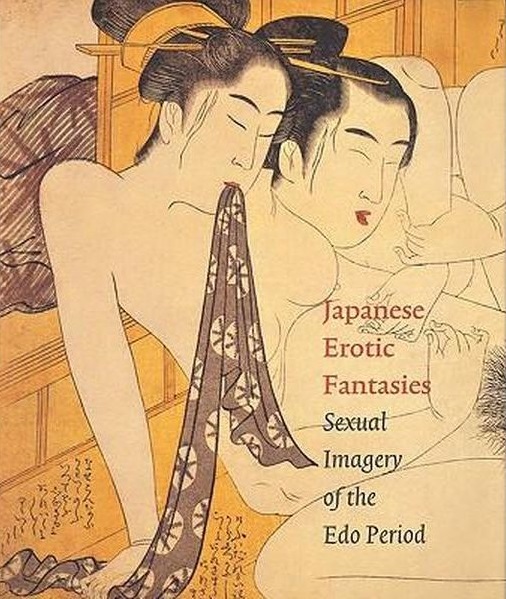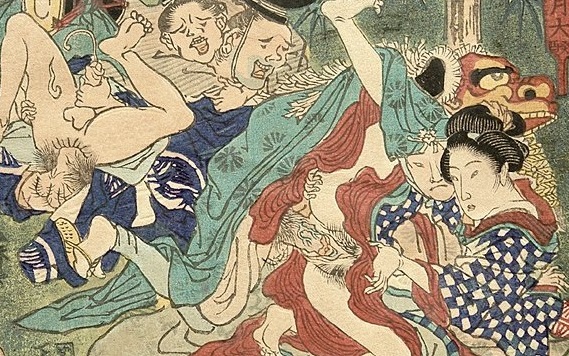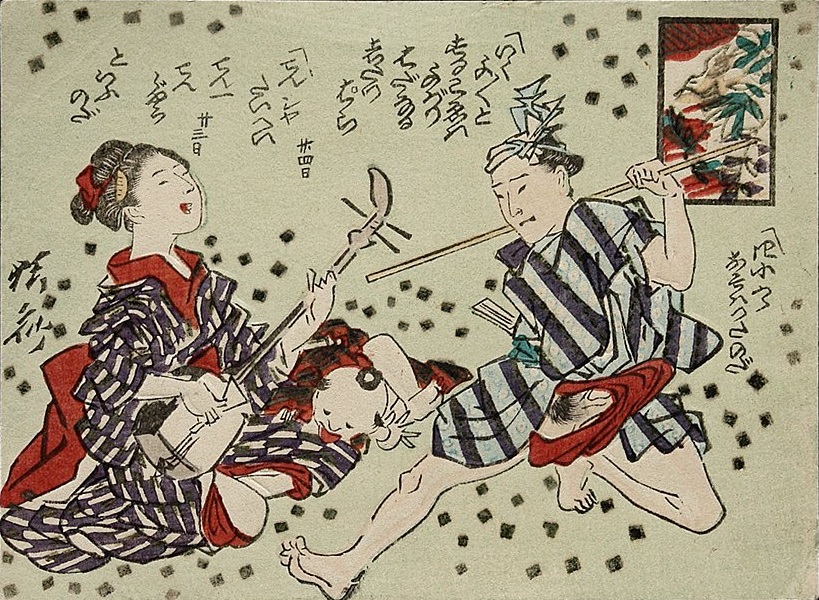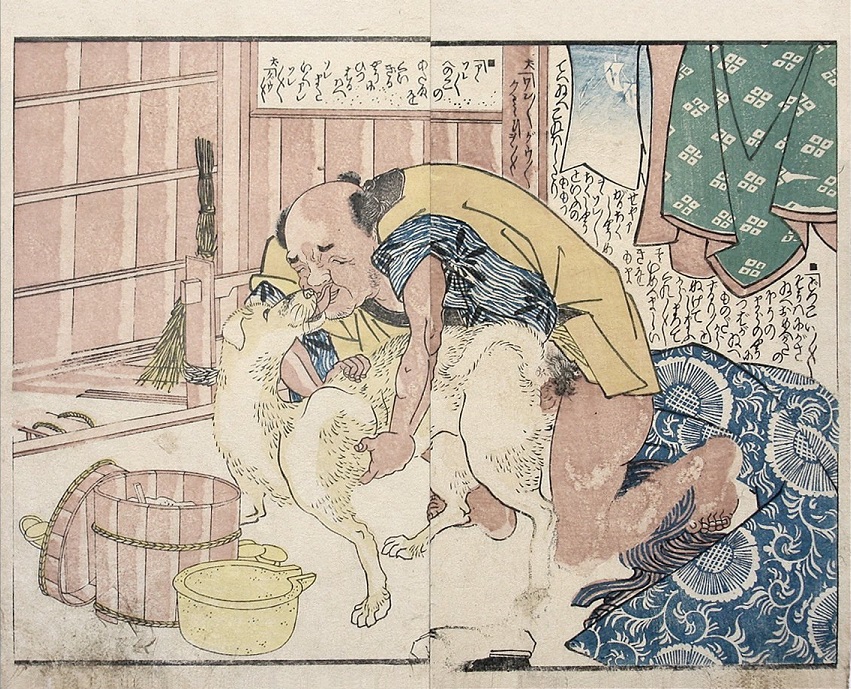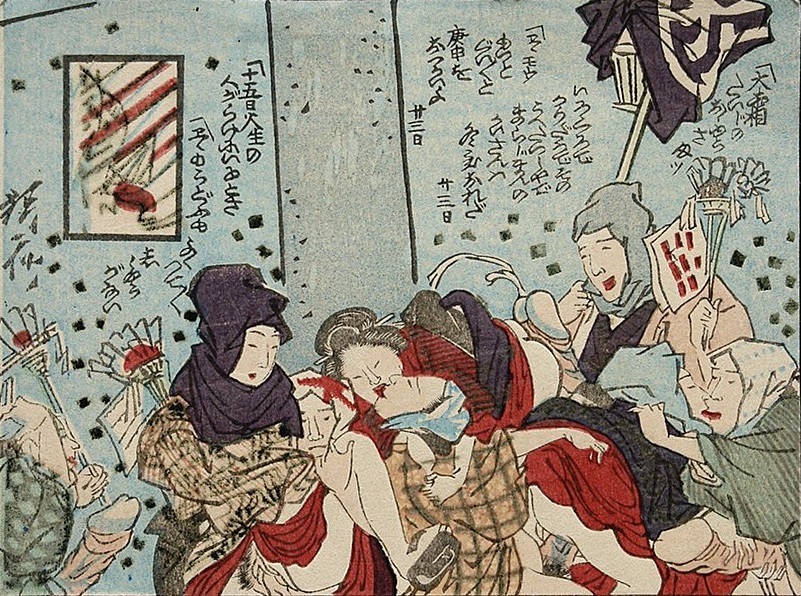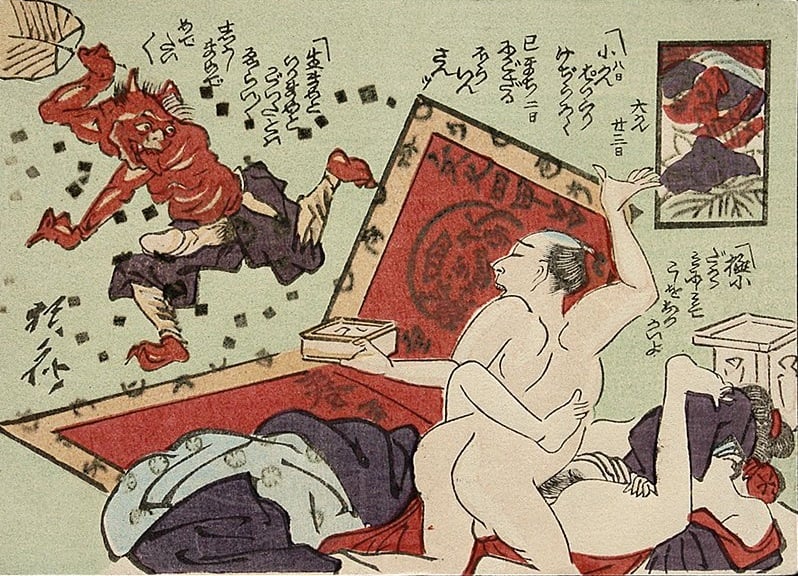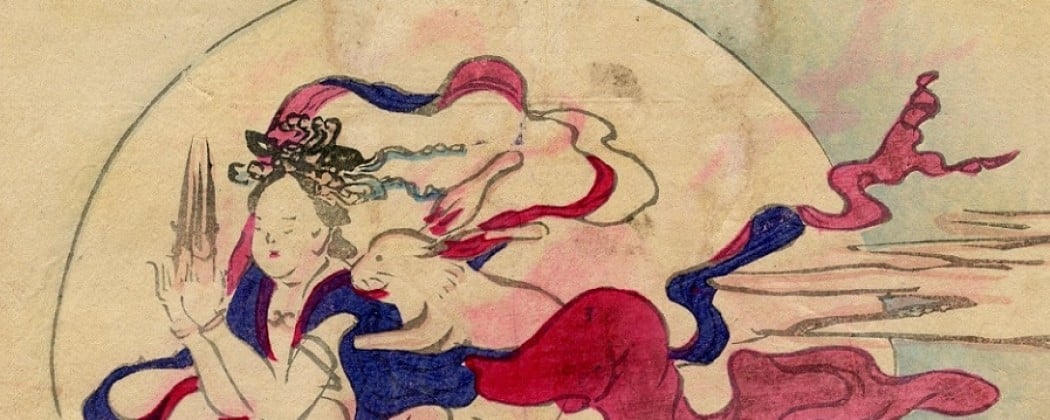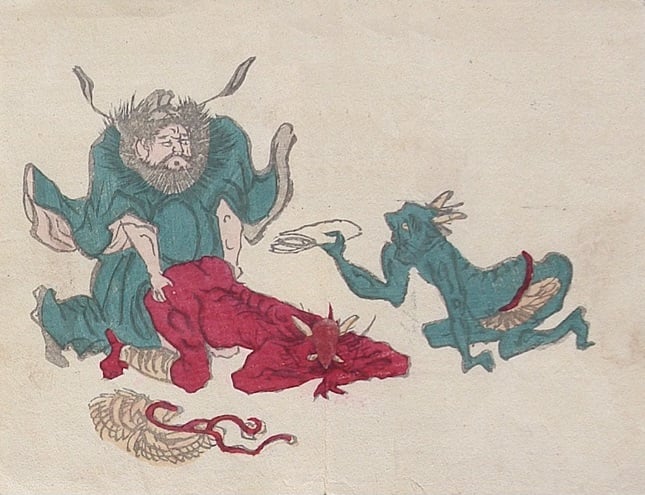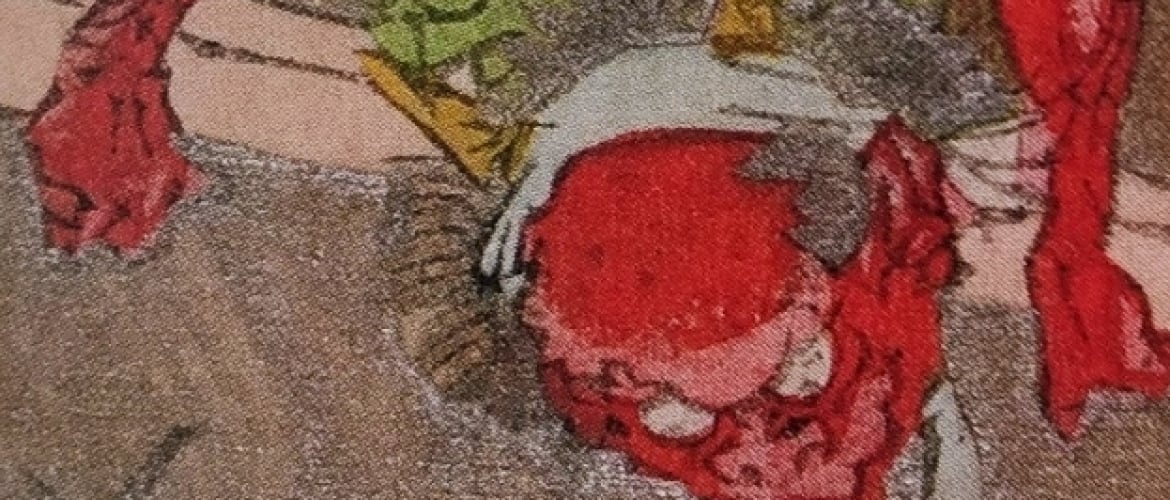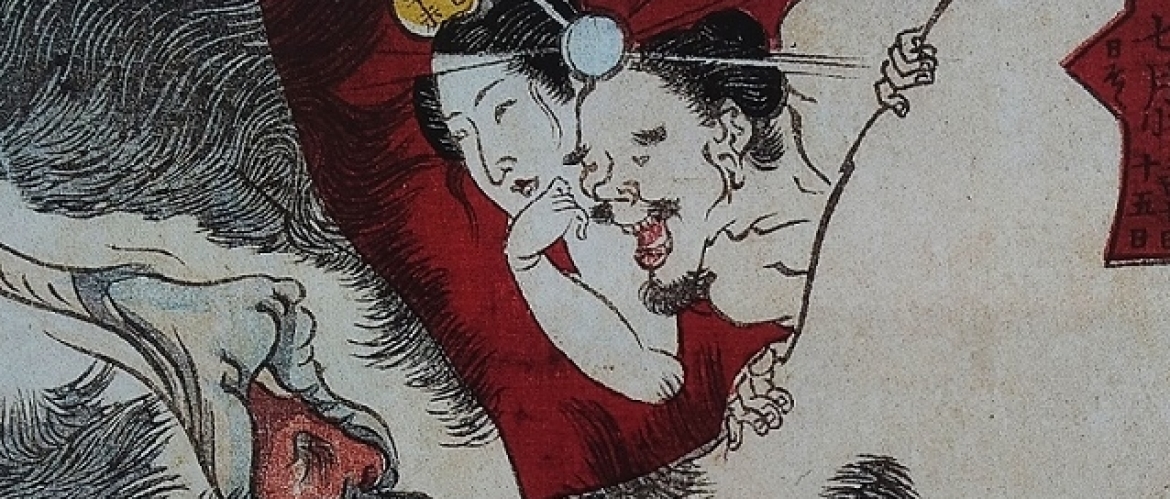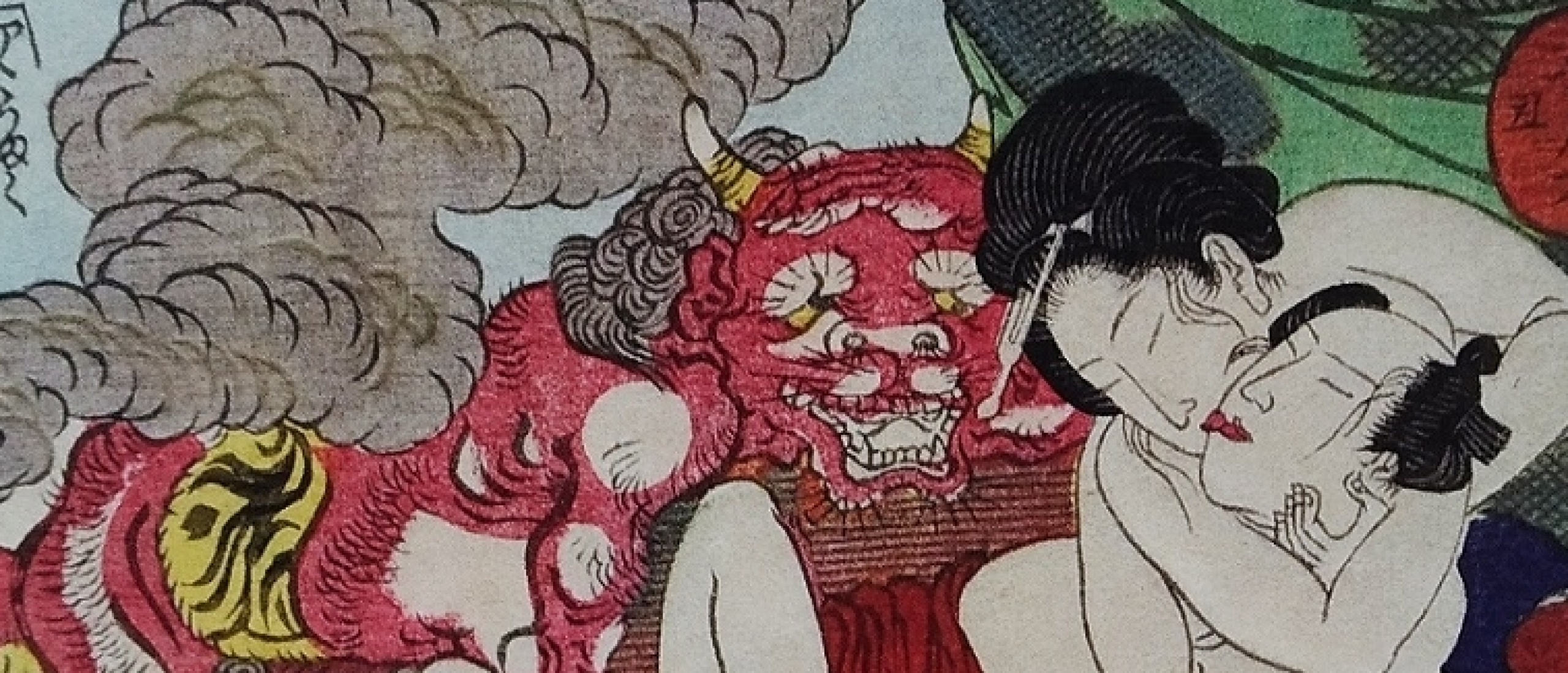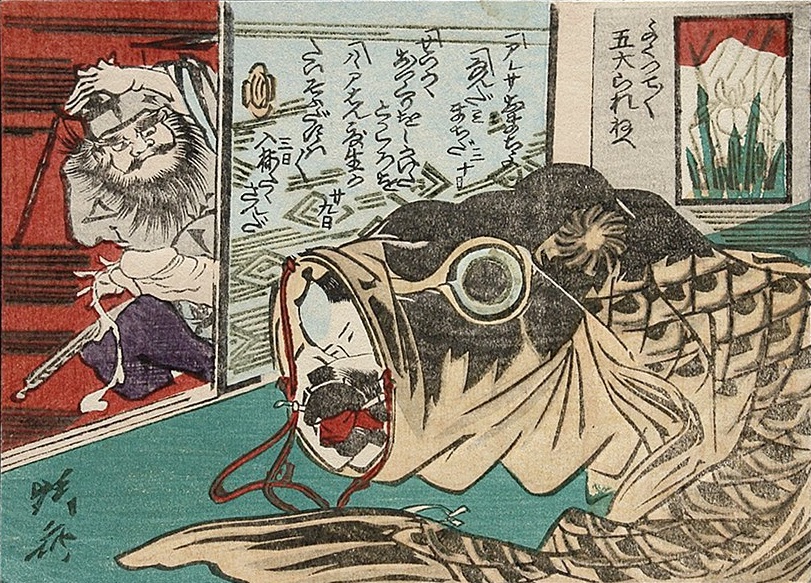
‘Shoki, the Demon Queller, happening upon a couple making love in a carp-shaped streamer associated with Tango-no-sekku, the Boy’s Festival. Images of the protective deity Shoki were customarily hung during the festival.’ From the series ‘Hana-goyomi (Flower Calendar)’, c.1864, Fifth month. Designed by Kawanabe Kyosai (1831-1889)
Below the image you can find more info and a translation of the Japanese text in the design:
Demon Queller Shoki
“…A familiar subject in Kyõsai’s oeuvre is Shõki chasing a demon (oni). One of his finest ‘Shoki’ compositions is a painting housed in the collection of the Linden-Museum Stuttgart which shows the demon queller following an oni, who is hiding in the mouth of a paper carp streamer (koinobori). In a shunga version of this theme Kyõsai also depicts Shõki in pursuit of the demon, but in a comic twist the oni has been replaced by a couple making love (cat. no. 88a).
Carp Streamer
This small koban-size print is from a series of twelve images entitled ‘Flower Calendar (Hanagoyomi)’ , in which each sheet represents one of the twelve months and includes text by an unidentified author. The association of the carp streamer with the Boy’s Festival on the fifth day of the fifth lunar month (May) and the fact that the demon queller Shõki is known as a guardian of children are the first clues that this composition is linked to May.
Blue Warrior Festival
Additional hints lie in the dialogue inscribed on the sliding door and the wall in the background. It begins to the far right with the man exclaiming ‘Good, good, superb!’ (yokutte, yokutte, kotaerarenehe) and includes the number five and the character dai (long). This indicates that the print was published in 1870, a year when May was a ‘long’ month (30 days, a ‘short’ month is 29 days). The young woman then tells the man to wait. He asks why, and his words are followed by the number thirty. This is an allusion to the ‘Blue Warrior Festival’ (Kõshin-machi), which in 1870 took place on the thirtieth day of May.
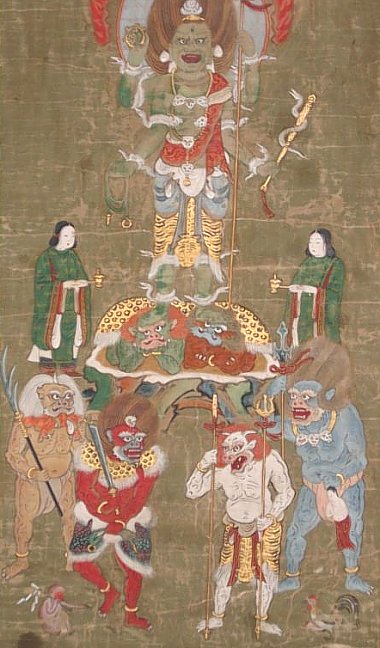
Kōshin Machi -Mandala (Date unknown) – Used for the Kōshin Vigil, Kōshin Wake, Kōshin Gathering, Kōshin Ritual. (Copyright Mark Schumacher)
Solstice
The man explains that he finds the carp streamer a cosy place to make love. But the woman repeats that he should wait, using the expression ‘han-goshõ‘ (goshõ means ‘pardon me’; han or ‘half’ was added for the sake of punning) and the number twenty-nine. In 1870, the twenty-ninth day of May marked mid-year (han-geshõ), or more precisely the eleventh day after the summer solstice, and the author creates a wordplay with the terms han-goshõ and han-geshõ.
Rainy Season
The final words of the couple, integrating the number three, state that they do not like the rainy season. This is another allusion to May, as the beginning of the rainy season (nyûbai) fell on the third day of the month”. (excerpt from the article ‘Meiji Shunga: The Comic Genius of Kawanabe Kyõsai ‘ by Oikawa Shigeru)
Click HERE for the design of the sixth month!


